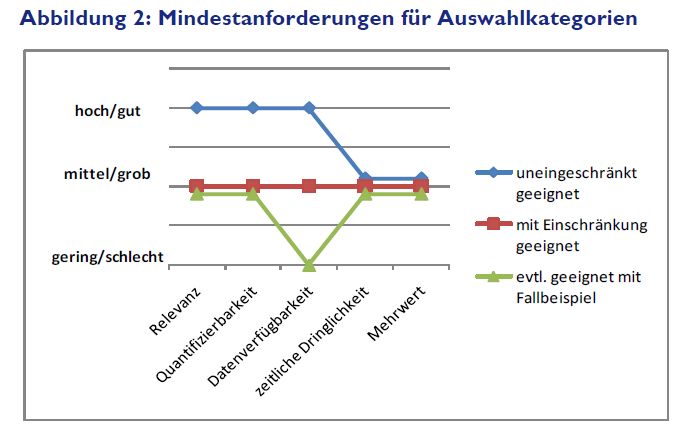Kosten und Nutzen von Anpassungsmaßnahmen an den Klimawandel
Analyse von 28 Anpassungsmaßnahmen in Deutschland
- Publication
- Citation
Tröltzsch, J.; Görlach; B.; Peter, M.; Lückge; H.; Sartorius, C. (2012): Kosten und Nutzen von Anpassungsmaßnahmen an den Klimawandel: Analyse von 28 Anpassungsmaßnahmen in Deutschland. (Costs and benefits of adaptation options against climate change: Analysis of 28 adaptation option for Germany.) Funded by German Federal Environment Agency. Dessau.
This study about the costs and benefits of adaptation measures in Germany shows that many such measures can deliver results and are economically viable. Included here are green roofs that protect against heat waves in cities, the restoration of floodplains, and heat-resistant asphalt for street cover. Measures to increase awareness of adaptation opportunities were also found to have positive effects. Aside from the economic assessment, a broader set of criteria for assessing these measures was developed that can give political actors a better idea about which measures deliver positive co-benefits or are relatively easy to implement. The study is available for download.
Certain impacts of climate change, such as flooding, flash floods, and heat waves, are expected in Germany. These events can induce huge economy-wide damages. Employees of Ecologic Institute, in cooperation with researchers from INFRAS and Fraunhofer ISI, have recently released a study for the Federal Environment Agency (UBA) that assesses the costs and benefits of adaptation measures. The study can be found here (German only).
Until now, no systematic cost-benefit analysis has been undertaken for climate change adaptation measures in Germany. This study helps to fill this knowledge gap and provide insights about remaining risks and informational needs. The project developed an assessment framework that goes beyond basic cost-benefit analyses and applied this to 28 different adaptation measures. The study showed that the methodology was applicable in practice and also expanded and consolidated the empirical basis for the economic assessment of adaptation measures. The results give an impression of how useful economic analysis for the assessment, prioritization, and selection of adaptation measures can be.
Many differences can be found among the measures investigated in the study. The cost-benefit results vary from highly positive (for example, heat wave warning systems and adapted plant species) to negative, when the projects are linked to high investment or maintenance costs (for example, projects to adapt infrastructure for water and energy). The adaptation measures investigated here for transport seemed to have at least balanced costs and benefits, so long as they are integrated into the normal renovation and maintenance cycle. Awareness-raising campaigns and information dissemination also showed at least equal costs and benefits, partially due to the fact that costs are often quite low. It is, however, difficult to assess and monetize the benefits of these measures, which are thus saddled with great levels of uncertainty.
In the application of cost-benefit analysis to such measures, caution is always advised: the benefits of many measures can often only be partially monetized. In such cases, non-monetary, qualitative impacts must also be explicitly considered. Additionally, many assumptions must be made as part of these assessments because so much data is lacking. In this study, these assumptions were made as clear and transparent as possible.
A pure cost-benefit analysis has many limitations: aside from the inability to quantify many impact categories (especially the value of non-market goods like biodiversity), additional practical aspects of implementation are worth going into. Political and societal acceptance, prospects for implementations, monitoring requirements, and free-rider effects are all worth investigating. These considerations cannot truly be integrated in a pure cost-benefit analysis. Therefore, a broader set of criteria designed to go beyond a normal cost-benefit analysis and integrate additional considerations was used in the study.
The report Costs and benefits of adaptation options against climate change: Analysis of 28 adaptation options for Germany [German] can be also found at the UBA website.
The background material prepared by the UBA The climate change impacts in Germany – What can we do and what does it cost ? [German] compiles the main results.




